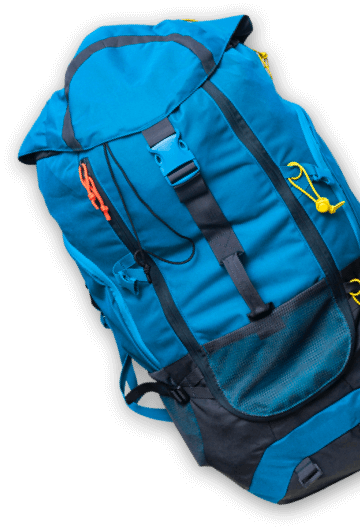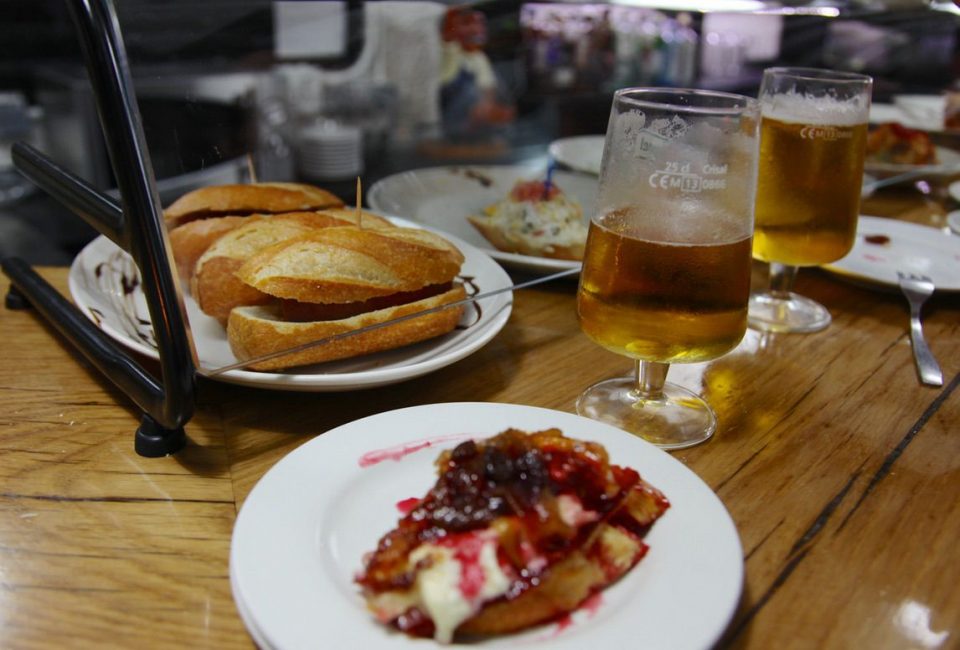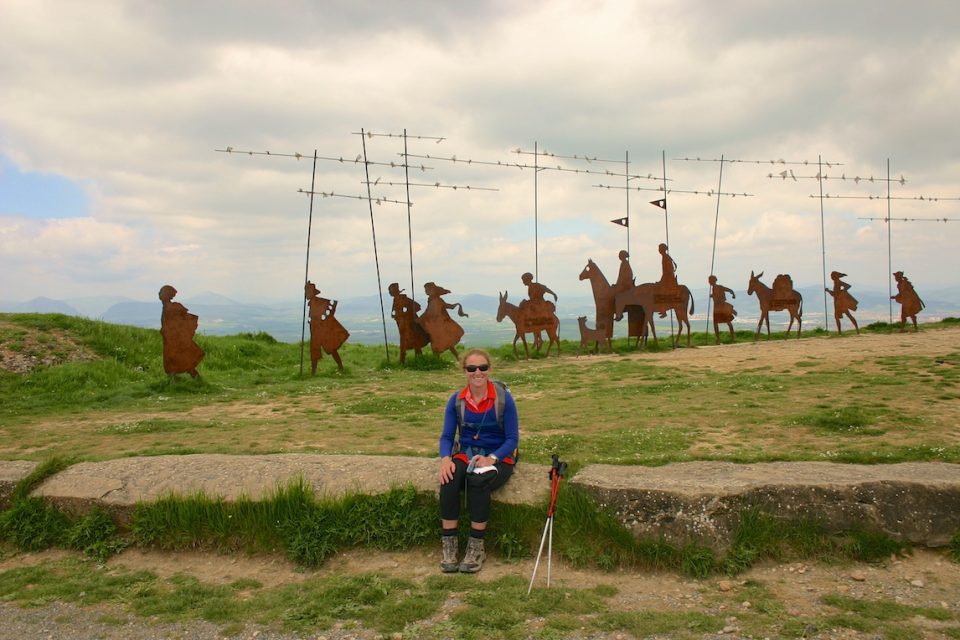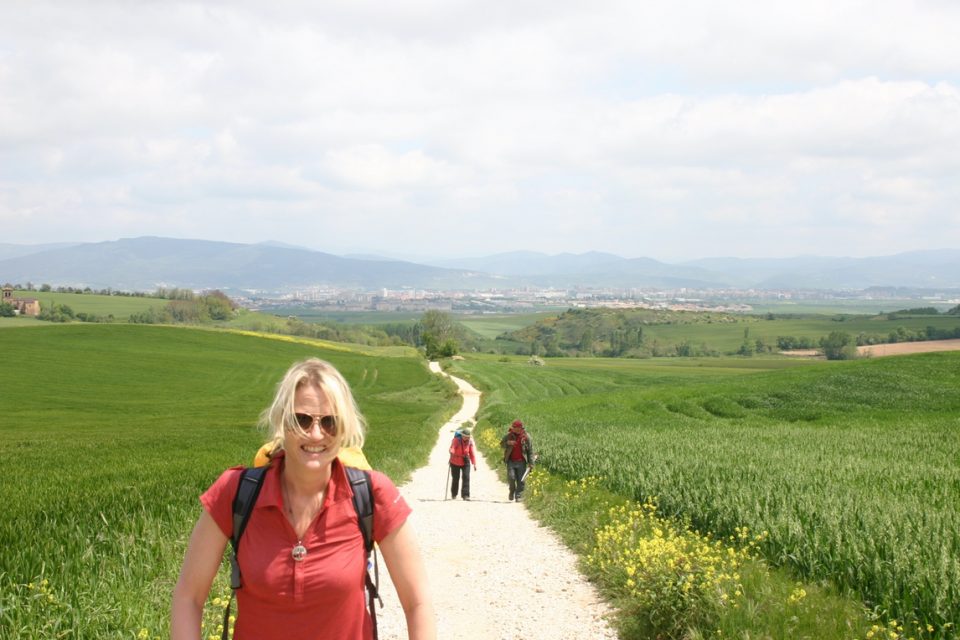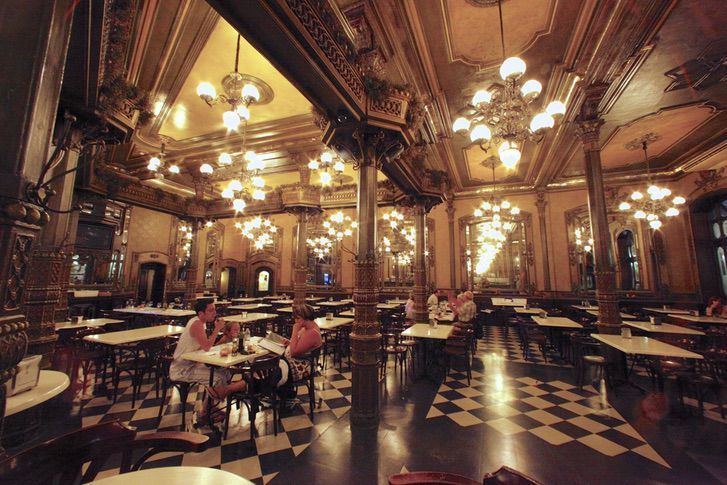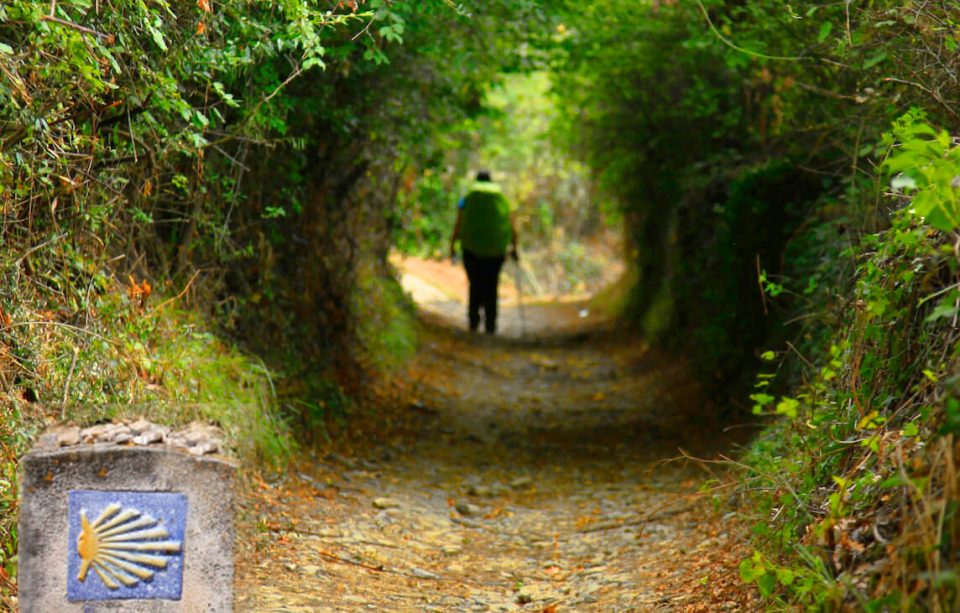length
11 Days
difficulty
Challenging
trip cost
from $1990 pp
Nature Immersion
Cultural Interest
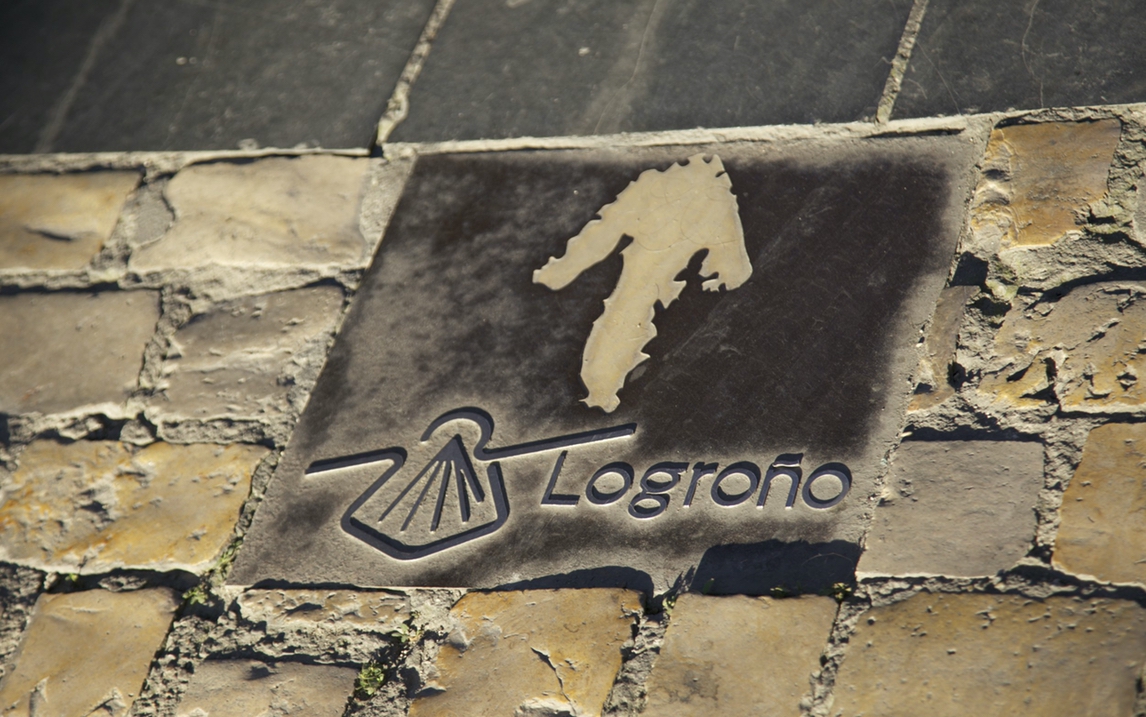
Highlights
Get Ready For
- Cross the imposing and beautiful Pyrenees from France into Spain
- Enjoy a sip of wine at the famous wine fountain of Irache
- Soak up the history and vibrant basque culture in Pamplona
- Join a tapas or pincho tour in the streets of Pamplona and Logrono
- Walk through vineyards and olive groves; enjoy the world famous Tempranillos of the Rioja region
Itinerary
Daily Details
Arrive into this delightful mountain town at the foothills of the Pyrenees after your journey from Pamplona or Bayonne. The old town of St Jean Pied de Port winds down the hill with narrow cobbled streets that are a delight to explore. Take in the views from the Citadelle which looks across the wooded valleys as you meet pilgrims from all over the world ready to embark on their Camino.
St Jean was built in an important position that guarded the passes through the Pyrenees and the armies of Charlemagne and Napoleon passed this way. It has become the traditional starting point for pilgrims walking the French Way and you will see many people arriving and preparing for the challenging Pyrenees crossing. Decide if you will take the Napoleon route (very scenic but more difficult) or the Valcarlos route (for bad weather). Before you embark on your Camino journey make sure you buy any last minute supplies, pack your lunch and light a candle at the church for good luck.
Set off in the predawn darkness through the old streets and under the statue of St James, follow in the footsteps of millions of others who have preceded you over the centuries. The streets are full of pilgrims walking towards the hills, it is a magical feeling as you cross the old bridge and head out of town. Today will be the first time you follow the famous yellow arrows which mark the 790km journey all the way to Santiago; you will get very good at looking out for the markings and for other pilgrims along the route. The first section today is steep as you follow country lanes up out of the Valley of St Jean. Make sure you take time to enjoy the views over the beautiful countryside. As you climb higher you will pass the Albergue at Orisson and then head into open country above the tree line, where sheep and ponies graze. Look out for the statue of the Virgin of Orisson and the van which sells hot drinks and snacks to weary pilgrims.
The inconspicuous border crossing from France to Spain lies within a patch of forest marked by an old stone sign stating the distance to Santiago and a small drinking fountain. Continue onwards to the highest point at the Col de Lepoeder (1450m) and enjoy the extensive views over the Pyrenees. After this, you start your descent through woodlands to the monastery at Roncesvalles, which beckons enticingly between the trees on your downhill climb. Arrive at Roncesvalles and enjoy a well earned drink at the Posada before checking into your accommodation. Roncesvalles or ‘the valley of thorns’ is a beautiful spot still cloaked in a medieval atmosphere. Make sure you visit the beautiful 12th-century church, cloisters and museum before dinner, where you will share tales with fellow pilgrims from every corner of the world, all relieved to have finished today’s section and some would say the hardest day of all the Camino.
Meals: B
After yesterday’s efforts, today’s walk is mostly downhill as you head down through valleys and enjoy delightful woodland walking. Meander on country paths, crossing rivers and climb two small hills with plenty of shade and drinking fountains en route. It is very pleasant walking and not as strenuous as the day before. Towards the end of the day you will descend into the town of Zubiri and possibly your overnight accommodation or onwards to Akerreta another few kilometres away depending on your itinerary.
Today is a long walk but well worth it once you reach your hotel in Akerreta which is a beautiful converted country house that featured in the movie ‘The Way’. Enjoy the lounge and library or relax with a drink before your meal which is prepared from produce grown in the gardens of the hotel, you will never taste anything fresher.
Meals: B
Today’s walk is much shorter as we leave the peace of the countryside and approach the famous city of Pamplona. There are some beautiful old bridges along today’s route and as we climb a small hill, the city comes into view. The excitement builds as you walk through the outskirts of the city, over the river and through the old city walls. Once inside the city, you’re immediately immersed in the narrow cobbled streets which burst with colour and life. The Camino passes through famous streets forming the route for the running of the bulls as part of the San Fermin Festival and spills into the central plaza area.
Meals: B
A day to sleep in, explore the sights of Pamplona and take in its artistic, historical and gastronomical highlights of this vibrant city. Alternatively, head to Cafe Iruna on the main plaza where Hemingway and other celebrities hung out, pay close attention to its art deco interior which has not changed over the decades. In the evening, dine in one of the city’s award-winning restaurants specializing in elaborately prepared ‘pinchos’ or finger foods.
Meals: B
The Camino quickly leaves the city and enters tranquil rolling countryside, passing through Cizur Menor on your ascent to the hill of the Sierra del Perdón. Here you’ll find the iconic sculptures of 12 medieval pilgrims in a procession (the inscription reads: ‘Where the way of the wind meets the way of the stars’). Upon descent you have the option of a side trip to the distinctive eight sided church of Eunate, linked to the Knights Templar who defended the pilgrims on the road to Santiago, continue on to Puente la Reina, famous for its perfectly balanced 11th-century stone bridge and one of the famous landmark images of the Camino.
Meals: B
Today’s track initially follows the River Arga before it begins its uphill journey. The walk continues through fields and past the remains of the 13th-century Monasterio de Bargota. Passing olive groves and vineyards takes you through the towns and villages and through a gothic arch into the medieval hilltop village of Cirauquí. A little unusually the Camino guides you through a building where you can stamp your own credencial. Look out for the beautiful 12th century Iglesia de San Román with its impressive doorway.
Leaving Cirauquí through another gothic arch, the Camino takes a downhill path leading to an old paved Roman road considered to be one of the best preserved examples along the Camino. After crossing a rather dilapidated Roman bridge, the route meanders through rolling arid hills where the Roman road disappears and reappear time and again. The next town is Villatuerta where at the top of the hill you will find the gothic 12th century Iglesia de la Asuncíon, an ideal place to rest a while. You will also find the Iglesia del Espiritu Santo and the Iglesia Santo Domingo just before reaching the pretty town of Estella.
Meals: B
The day starts in Estella, a lovely small town split in two by the Ega River and surrounded by conic, wooded hills topped with castles (or their ruins) and churches attesting to its long history as a crucial centre of commerce. In Estella you will find the famous Irache fountain which dispenses free red wine to thirsty pilgrims (courtesy of the Bodegas)! After taking a sip and visiting Estella’s most important monuments, your walk enters a dense forest of evergreen oaks and passes through fields of red poppies, wheat, grapes and white asparagus; the latter a local grown specialty. Continue on to Los Arcos a classical pilgrim halt, where you can enjoy narrow tranquil streets.
Meals: B
Most of today’s route is on natural paths and dirt tracks and is very enjoyable walking with some steep sections as you cross a set of hills prior to crossing the river valleys of the Rio Linares and Valdearas. At Torres del Río you’ll pass another architectural wonder of the Camino, the 12th century, 8-sided Holy Sepulchral Church, associated with the Knights Templar. Further on you reach Viana, your stop for the night, a well preserved historical town whose centre has changed little over the centuries.
Meals: B
Today our goal is Logrono, capital of the La Rioja region and home of some of Spain’s most celebrated red wines. The last short section of today’s route take us into the region of La Rioja before approaching the university city of Logrono built on the river Ebro. Logrono has one of the most distinguished culinary traditions in Spain and there are over 50 taperías (tapas restaurants) located within a four block area close to the town centre. The traditional tapas restaurants often serve only one tapa (such as mushroom), served as pincho (pintxo in Basque) and meaning one serving. Many pilgrims also elect to include a rest day here.
Meals: B
You are free to check out of your hotel any time before 10am. If you would like to explore Logrono further you are able to leave your bags with reception.
Meals: B
Map
Explore
Saint-Jean-Pied-de-Port
This delightful mountain town at the foothills of the Pyrenees is the traditional starting point for pilgrims walking the Camino Francés. You will see many people arriving and preparing for the challenging crossing. Decide if you will take the Napoleon route (very scenic but more difficult) or the Valcarlos route (for bad weather).
CLICK ON A PIN TO REVEAL INFORMATION ABOUT THAT LOCATION
Roncesvalles
Roncesvalles (‘the valley of thorns’) is a beautiful spot still cloaked in a medieval atmosphere. Make sure you visit the beautiful 12th-century church, cloisters and museum.
Akerreta
In the small village of Akerreta, about 6km past Zubiri and 17km before Pamplona, there is a beautiful converted country house (casa rurale) that featured in the movie ‘The Way’.
Pamplona
This vibrant Spanish city is bursting with artistic, historical and gastronomical highlights! We recommend dining in the city’s award-winning restaurants that specialise in elaborately prepared ‘pinchos’ (finger foods) and doing a foodie tour.
Puenta de la Reina
The small town of Puenta de la Reina (translated as ‘Bridge of the Queen) is famous for its perfectly balanced 11th century stone bridge; it’s one of the most famous photos of the Camino. It is the point where the Camino Francés meets the Aragonese Route. As a result of the two paths crossing, Puente la Reina has been a major meeting point along the Camino for hundreds of years.
Estella
Estella is a lovely small town split in two by the Ega River and surrounded by conic, wooded hills topped with castles (or their ruins) and churches attesting to its long history as a crucial centre of commerce. Just outside of Estella you will find the famous Irache fountain that dispenses free red wine to thirsty pilgrims (courtesy of the Bodegas)!
Los Arcos
Los Arcos is another charming village situated along the Camino. It is a classical pilgrim halt that is known for its old town, with cobbled streets and well-preserved buildings. The village offers a range of services for pilgrims, including restaurants, grocery stores, pharmacies and medical facilities.
Logroño
The capital of the La Rioja region is home to some of Spain’s most celebrated red wines. It has one of the most distinguished culinary traditions in Spain. There are over 50 taperías (tapas restaurants) located within a four-block area close to the town centre. The traditional tapas restaurants often serve only one tapa (such as mushroom), served as pincho (pintxo in Basque), meaning one serving.
Inclusions
What's included?
- 10 nights excellent accommodation including historic hotels and character country houses.
- Twin share en suite rooms on a twin share basis
- Daily breakfast
- Luggage transfer each day from hotel to hotel (1 x 20kg bag per person)
- RAW Travel navigation app with maps of your hotel locations and emergency contact numbers
- Local and Australian emergency contact numbers
- Pre-trip Camino guidance and planning
- Dedicated local support person in Spain for reassurance
- Single supplement $800
- Travel insurance
- Flights
We can include transfers to and from Barcelona by train, additional rest days as required and reduce the kilometres walked over the Pyrenees. If you would like to do a food or wine excursion in Pamplona or Logrono let us know.
For any part of your trip that falls between 31 October and 31 March there is an out-of-season luggage transfer surcharge cost of $30 per person per day.
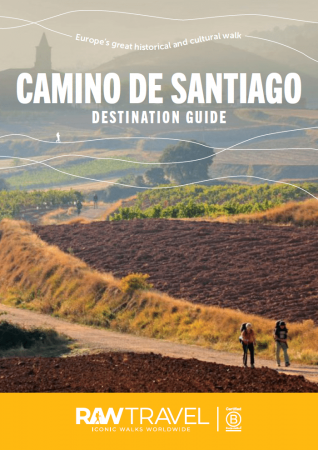
Exclusive Guide
Camino de Santiago
Walking the Camino is an incredible journey that will immerse you not only in Europe’s grand history, food and culture but most importantly the extraordinary camaraderie that exists along these routes. The spirit of the Camino de Santiago is alive and well among people from all over the world. It is a bucket list experience you will never forget! Discover inspiration, travel essentials, practical information and more in our free Destination Guide. All you need to know about walking the Camino de Santiago routes through Spain, Portugal and France!

Camino de Santiago
The Highlights Trip – Camino
- Walk the best sections of the Camino
- Use trains to visit other cities along the route
- Follow in the footsteps of millions of pilgrims
- Dedicated local support person in Spain
$2,690.00

Camino de Santiago
The Camino Stage 5. Sarria to Santiago: 11 days
- Walk the final 100km of the Camino Trail
- Qualify for your Compostela
- Finish in this historic city of Santiago
- Visit the final end point of your walk at the Cathedral
$1,890.00
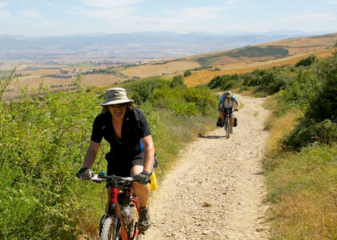
Camino de Santiago
The Camino Stage 2-5. Pamplona to Santiago: Mountain Bike
- Mountain Bike Pamplona to Santiago
- Bring a pebble or memento from home to leave at the Cruz de Ferro
- Indulge the tastebuds; visit the Museo del Chocolate in Astorga
- Finish your pilgrimage walking into the city of Santiago de Compostela
$4,495.00

Camino de Santiago
The Camino Stage 3-5. Leon to Santiago
- Walk the final 300km of the Camino Trail
- This self-guided trip allows you to set your own pace
- Finish in this historic city of Santiago; visit the final end point of your walk at the Cathedral
$2,940.00
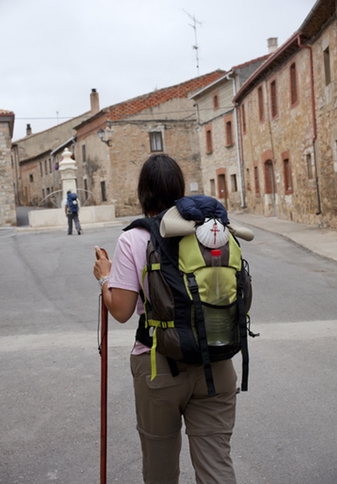
Camino de Santiago
The Camino Stage 5. Sarria to Santiago: Womens Parador Trip
- Walk the final 100km of Spain’s iconic Camino trail
- Qualify for your Compostela
- Finish in Santiago and visit the final end point of your walk at the Cathedral
- Stay in opulent Parador hotels
$2,795.00
TRIP date selection
when would you like to travel?
Please select your preferred dates for on-demand trips or select a scheduled date for group departures. If you have booked a self-guided trip please understand that because your trip date is on demand and we must check availability of all properties on your chosen dates before it can be fully confirmed

